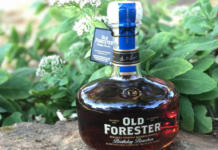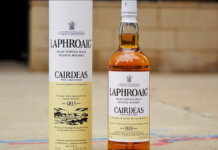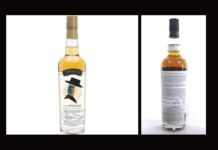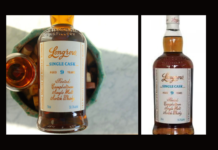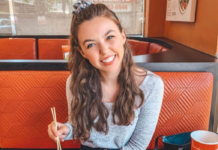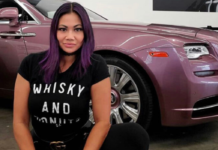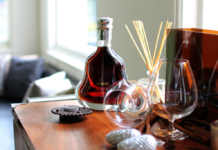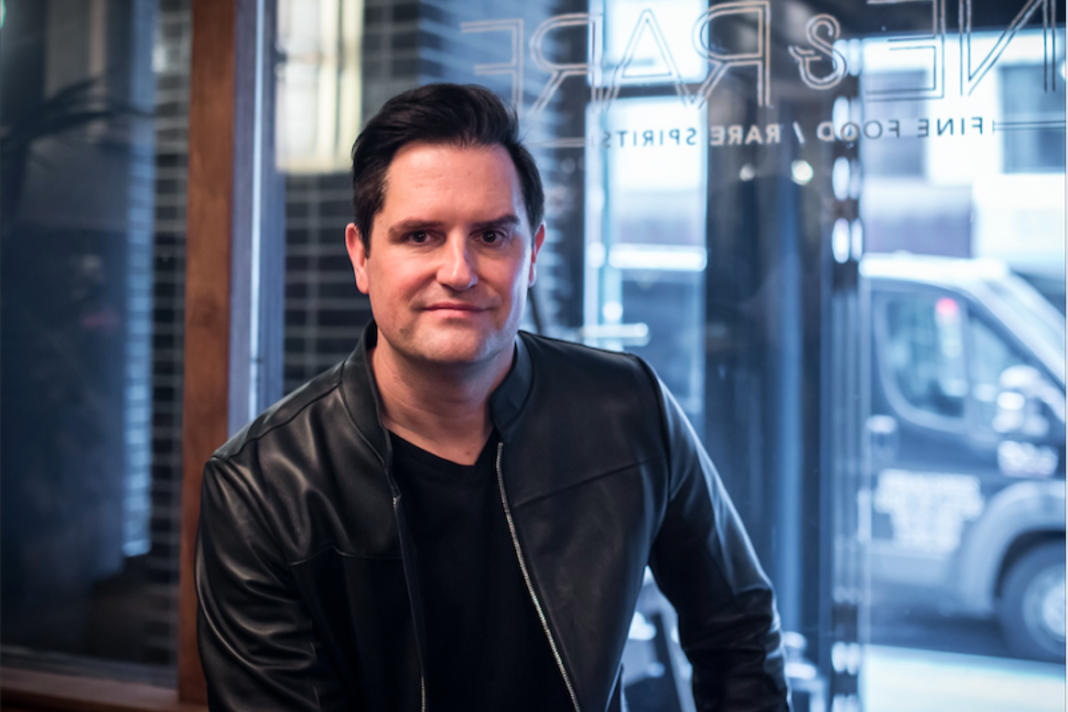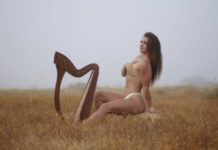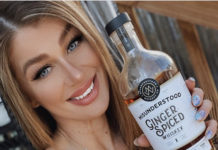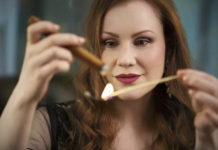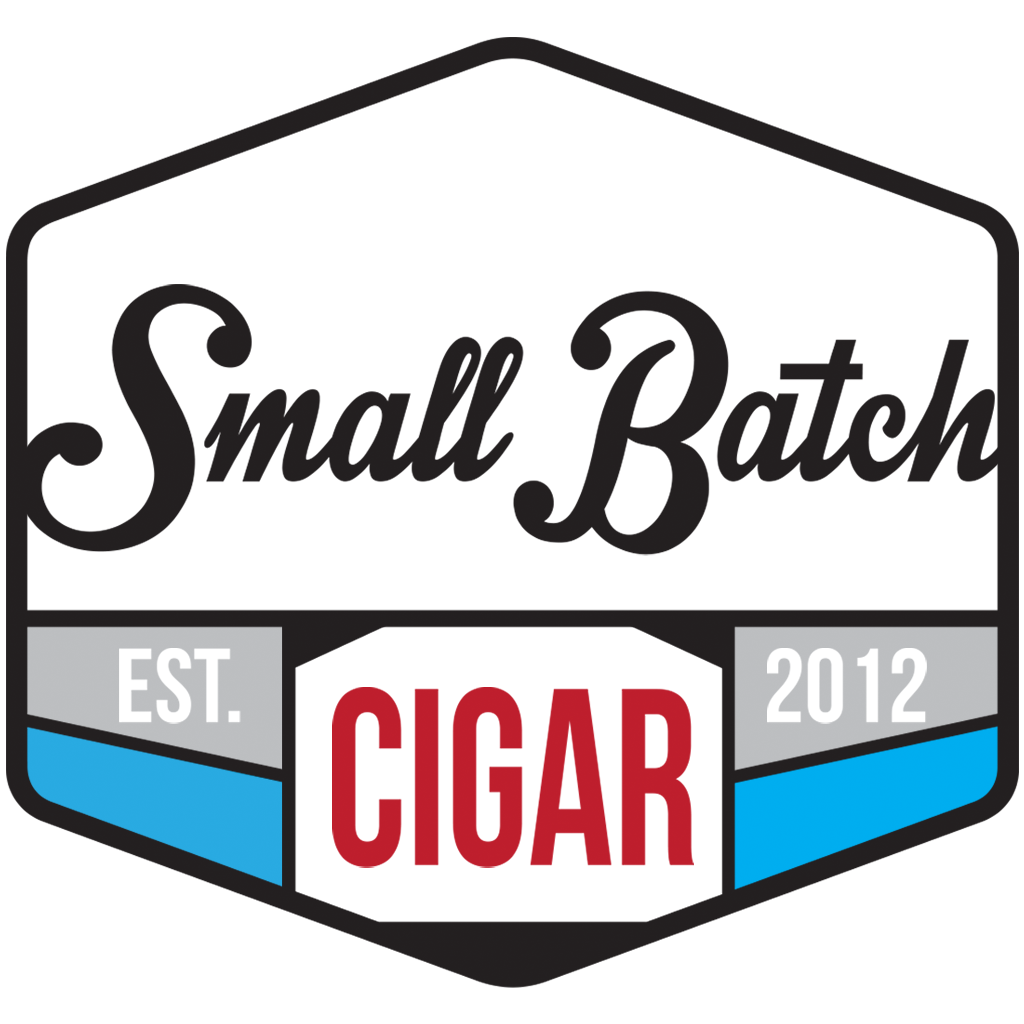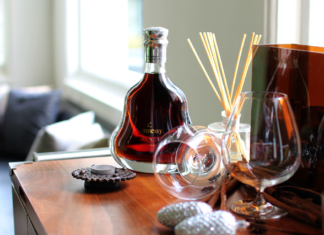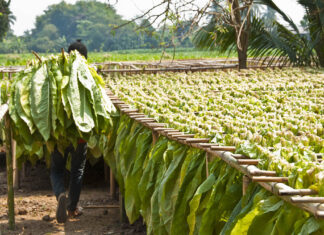My colleague Billy and I had the pleasure to sit down with the entrepreneur himself, the owner of both the Flatiron Room and Fine and Rare in New York City. We asked Tommy some hard hitting questions which he answered as a complete and knowledgeable gentleman.
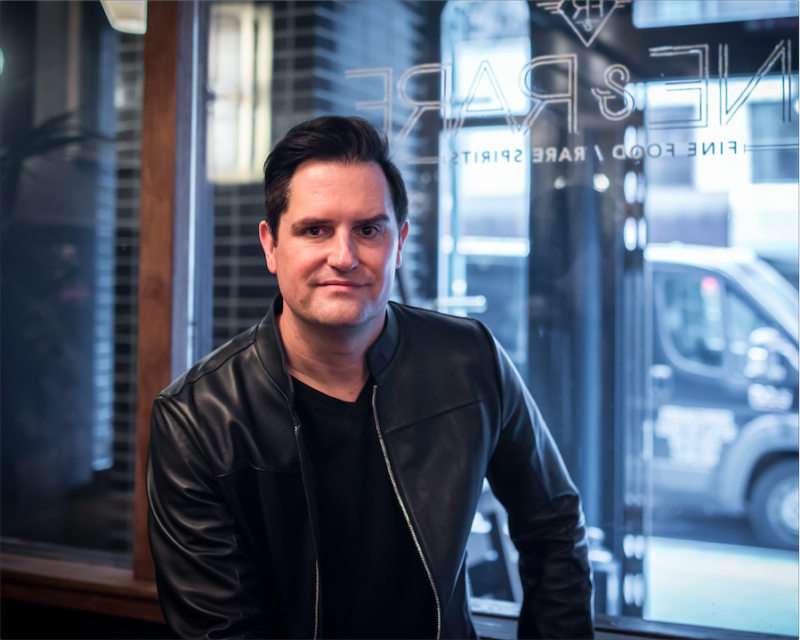 G: So let’s kick things off Tommy, tell us about your new venture Fine and Rare.
G: So let’s kick things off Tommy, tell us about your new venture Fine and Rare.
Tommy: At Flatiron Room we had a lot of demand and we didn’t have enough supply, all the investors were paid off, and I decided why not go for another one. It was great to have an opportunity to say if we could do it all over again, what would we do different. What we should capitalize on, what we know our customers like, and what can we improve on, and so it was a great opportunity for me. I love the idea of taking everything that we’ve learned over the course of 5 years, and building a better mouse trap.
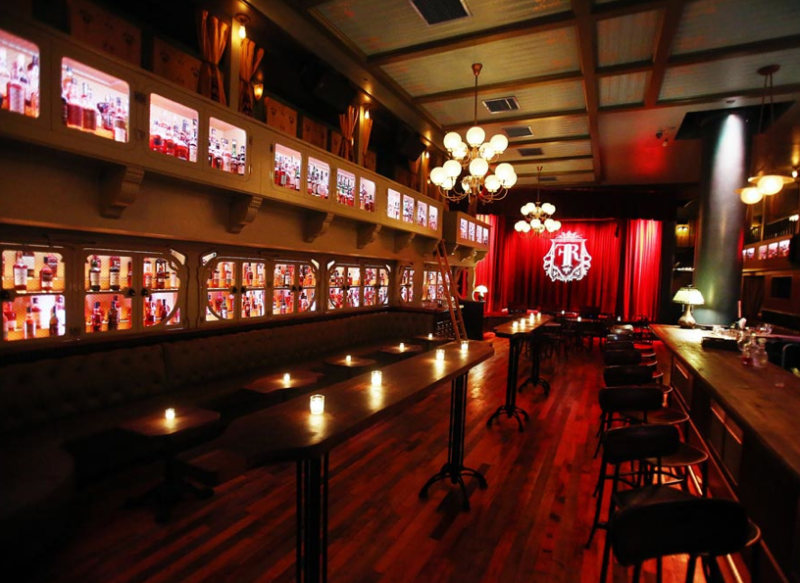 B: So do you see the venues on two different levels. An entry level drinker would go to Flatiron Room and more experienced one would go to Fine and Rare?
B: So do you see the venues on two different levels. An entry level drinker would go to Flatiron Room and more experienced one would go to Fine and Rare?
Tommy: Not really. When people ask me to describe the differences between the two, I would say first and foremost, we’ve departed from being purely whisky centric. Flatiron room has got the reputation of being very whisky centric, although we have cocktails and we have wine, what we wanted to do here is kind of differentiate our basket and bring in as the name implies the Fine Foods and Rare Spirits. We wanted to bring in different spirits. We wanted to bring in the Agave portfolio, we wanted to bring in a lot of rum, and brandy, which was exciting for me and part of it is self serving, because I love learning about it. I’ve grown so much within the whisky category, I know a lot about it, but being able to tackle some other spirits is pretty great.
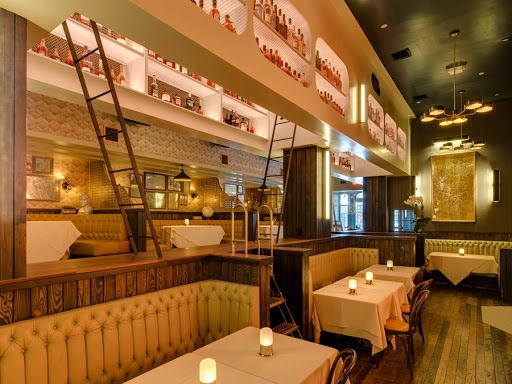 B: So can you rewind a little bit even further like before Flatiron.
B: So can you rewind a little bit even further like before Flatiron.
Tommy: Before Flatiron, I have a very nontraditional hospitality background; I got my degree in Journalism with minor in Advertising. I was never a foodie per-se, but I always liked to eat. I always liked to drink. I certainly wasn’t a connoisseur. I worked in advertising, that was my background. I used to be a creative director in advertising and my goal has always been very career focused. For me the kind of pie in the sky, the ultimate goal was to work on Madison Avenue in a Senior Creative Director position. I achieved that at an early age, quicker than I thought. And when I got there, I think it’s just like someone who wants something so bad and they get it and they are like huh. Everything that got me into advertising world, which was basically the creative side of it, and the marketing side of it, the higher up I climbed the corporate ladder, the less creative it was and became more managerial. So when I reached that ceiling I said I just want to do something different. And I think part of the romance of the industry got me. It’s a very romantic industry, and its one on the surface that looks extremely easy. I mean to this day I get people all the time, that are like “Yea, my wife and I want to start a Restaurant, she loves to cook and I could tend bar”. And in this day in age, especially in NY City, you having good food is just required. That’s just a small component of what makes a successful operation.
So my first place that I opened, I reinvented the wheel 100 times. I knew there was an easier way, but at the time, I didn’t have any contacts in the industry, so I basically created everything from scratch, which was very difficult but I attribute the success of my first place to my background in advertising because I knew how to market things, I knew how to present things properly. So that got me through the first venue.
The first venue I had was a small lounge that made a little bit of money. Not that much, just enough to be like I think I can do this; and then at the end of the 5 years do I go back into advertising, or do I open up a new place. And that was a big crossroad. I think anytime you go on your own for any period of time it’s always difficult to go back and work for someone else, because you get a bite of that kind of entrepreneurial bug. So I proceeded to open up another place, a nightclub, which was horrible. It was profitable but the way I describe it to people nowadays “You’re in a career where you have gas in one pocket and a live flame in the other”, and things can go wrong at anytime. It’s just nightlife in NYC, and I really hated it but I think money kept me in it. I have a family, and I have two little children. As I started watching them grow up, I said I have to get out of this. I genuinely did enjoy hospitality. I love the immediacy of the model of being able to see the results immediately. Understand that it’s a very brick and mortar formula. You buy something for a certain price and then based on the experience you charge an X amount and you see what your Net Profit is.
The thing with the nightclub is you’re always chasing cool, and as I got older the less cool I got. Then at the crossroads again, I made a decision that I am going to design a place with me as the demographic. I would like to design a place that I would like to go to. That is how the Flatiron Room started.
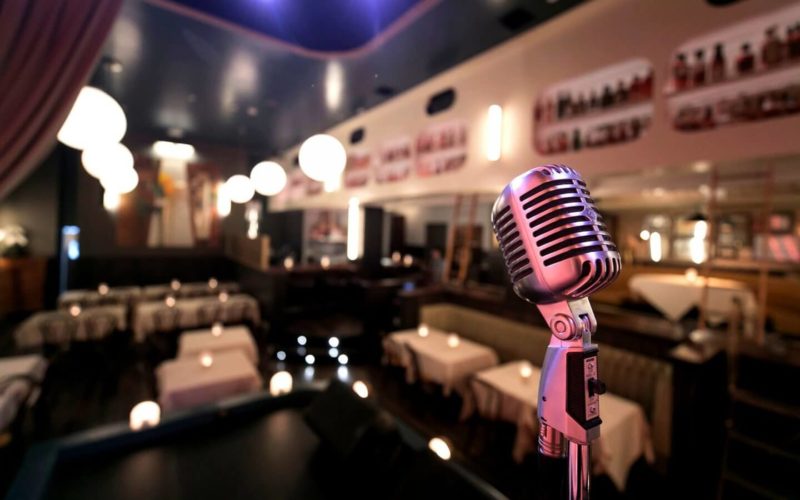 I loved the idea of a kind of throwback. I was a bit jaded with the nightlife industry, that I remembered in my business mind, I said we’re not looking to be hip, we’re not looking to be hot, we’re not looking to be cool, we’re not looking to be trendy. We’re going to be more of a place that has a feeling of being around forever. It gracefully ages and it has more character. And everything I would do, I would ask, would I like this as “me as a demographic”. And I was fairly confident that out there, there has to be other people that were looking for similar experiences like me. That experience was as people start to mature, they go out less, and when they go out less the people that they are out with, they want to talk; they want to catch up, because they are not going out as much, their lives get busier. When you’re out with your wife or your girlfriend, and you meet another couple, you want to have a conversation. You’re no longer in that mode of looking to hook up; you’re looking to catch up.
I loved the idea of a kind of throwback. I was a bit jaded with the nightlife industry, that I remembered in my business mind, I said we’re not looking to be hip, we’re not looking to be hot, we’re not looking to be cool, we’re not looking to be trendy. We’re going to be more of a place that has a feeling of being around forever. It gracefully ages and it has more character. And everything I would do, I would ask, would I like this as “me as a demographic”. And I was fairly confident that out there, there has to be other people that were looking for similar experiences like me. That experience was as people start to mature, they go out less, and when they go out less the people that they are out with, they want to talk; they want to catch up, because they are not going out as much, their lives get busier. When you’re out with your wife or your girlfriend, and you meet another couple, you want to have a conversation. You’re no longer in that mode of looking to hook up; you’re looking to catch up.
The live music became the integral part of that experience. I thought it would be cool to almost have a theatrical element to it. What I did in the beginning which was extremely tough is limiting the door, not in a selective way, but more of the bar is a little bit crowded right now, let me get your name and we will text you when a table opens up. Turning people away, every time a little part of me died, but I believed in the vision.
Initially we got some negative criticism, where people would be peeking through the door and say there’s plenty of room, we can squeeze in on the end. We made sure to train the staff so that we didn’t come off in a very pretentious manner. We want to be very accommodating. Our verbiage was always “We want you to enjoy the experience inside, and we don’t want to compromise that. And eventually after 6-8 months we started noticing reviews come in that said: They love that we do not pack the place. That was a big uh huh moment for me, I knew that I was onto something.
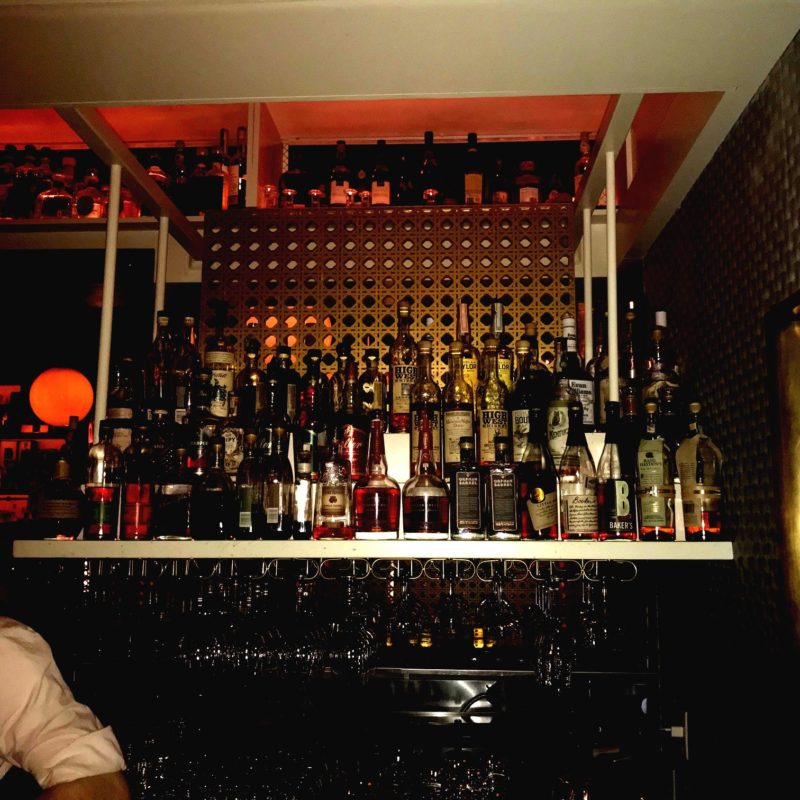 G: So you started the Flatiron Room, and it became known to be the place to go to if you enjoyed whisky, you showcase entry level to some of the rarest spirits, more than anyone in NYC has to offer. Was whisky always a passion for you and you needed it to be an attribute of the Flatiron Room, or was it a need for the business?
G: So you started the Flatiron Room, and it became known to be the place to go to if you enjoyed whisky, you showcase entry level to some of the rarest spirits, more than anyone in NYC has to offer. Was whisky always a passion for you and you needed it to be an attribute of the Flatiron Room, or was it a need for the business?
Tommy: I’ll be the first to say, that I attribute our success to the timing. The Whisky renaissance took off right when we launched this. I lived down in Tribeca and I used to go to Brandy Library a lot, and I thought man these guys really know what they are doing. I love it when I am here, its mature, it’s upscale, I love the selection. And then I would also go to the Plaza Hotel, at the Rose Bar, and they had live music and I had some friends that would play there, and I just thought that, that was also really special, and so cool to have that kind of component. And I also like the idea of these places in NY that have just been around forever. It almost has a soul to it. I liked all those components so when I came up with the concept for the Flatiron Room, I wanted to combine all those things. And I enjoyed whisky a lot, and I’ve never been a big cocktail person. I like cocktails, but sometimes it’s just a little bit too much. If I enjoy something I will just keep drinking it, and not knowing the power of it. I’ve always enjoyed whisky; I like things that are very complex.
When I first opened, I thought I knew a descent amount about whisky, but I realized I didn’t really know much about it at all. And my goal was to have a couple of hundred whiskies on the shelf. With that goal, I invested in that and started building my library, realizing then that the whisky was a lot more complex than I thought. I said to myself I do not want to be a poser, I do not want to have all these bottles on the wall, and not really know everything about them, and I also believe in leading by example. I knew I had to go do some traveling. I traveled to Scotland a lot, to Kentucky quite a bit, Japan, just learning about all this stuff. And then it almost switched and whisky became a hobby for me. And like anything, the more you learn about it, the more you want to know more about it. Also I learned that the more selections we had, the more people started seeing us as an authority in whisky. Then there was a certain obligation to keep bringing in all the new bottles. Back in the day I didn’t realize how many new marks a brand comes out with every year. And before I knew it, 200 became 300, 300 became 500, and the whisky momentum kept on building. Another biggest attribute to our success was not just timing but our staff. Our staff is just top notch. In order for us to be successful we have to be in a knowledge based model. I’m convinced that if we had all these bottles and we just had a bunch of pretty guys and girls trying to push the bottles and not knowing anything about it, we would be a failure.
People see whisky more of a hobby now, and they want to come in and talk about whisky. They want to be promiscuous with their whisky. They may love Macallan, and when they come in, they may say, Wow look at this list of Speyside whiskies, I usually drink Macallan but I’m not sure what do you recommend. Us being able to say well if you like Macallan have you tried a Glendronach or Glenfarclas, and that just makes it engaging that also adds to the whole experience. Staffing is also a big key. And I think that played a lot into me learning everything about whisky. My staff really appreciated that I knew and was learning about whisky with them.
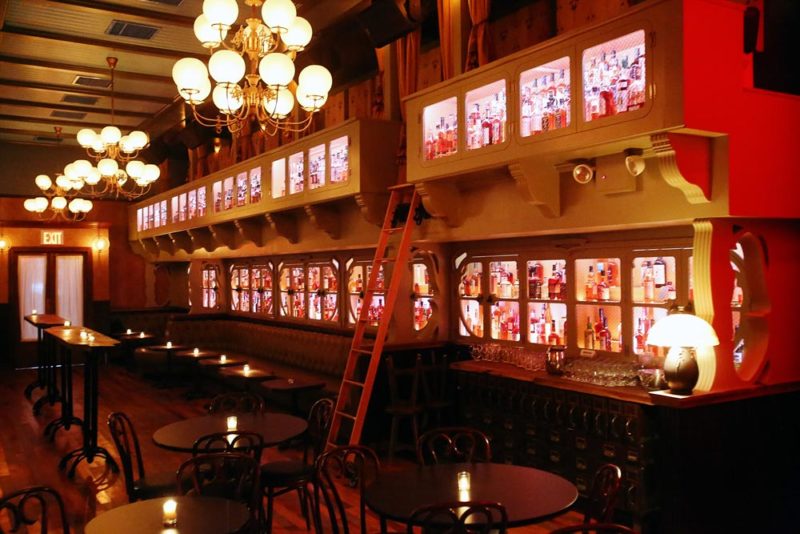 B: How do you go about choosing which whisky to showcase at your venue?
B: How do you go about choosing which whisky to showcase at your venue?
Tommy: For the Flatiron room as things come out we take it in. Although were one of the top accounts in NYC, even we have a hard time getting some of these releases that come out. Here at Fine and Rare we are a little more curated. Here it is more about quality over quantity.
B: Do you have any favorites that come in, brand ambassadors or distillers?
Tommy: It’s a really f*cking cool industry. Most of the people that I meet are good people. I think if you are in this industry, it’s kind of a cool industry. I like being around good people, I like hiring good people; it’s a really great community. Everybody knows everyone, and they are just good people. It makes life a lot easier.
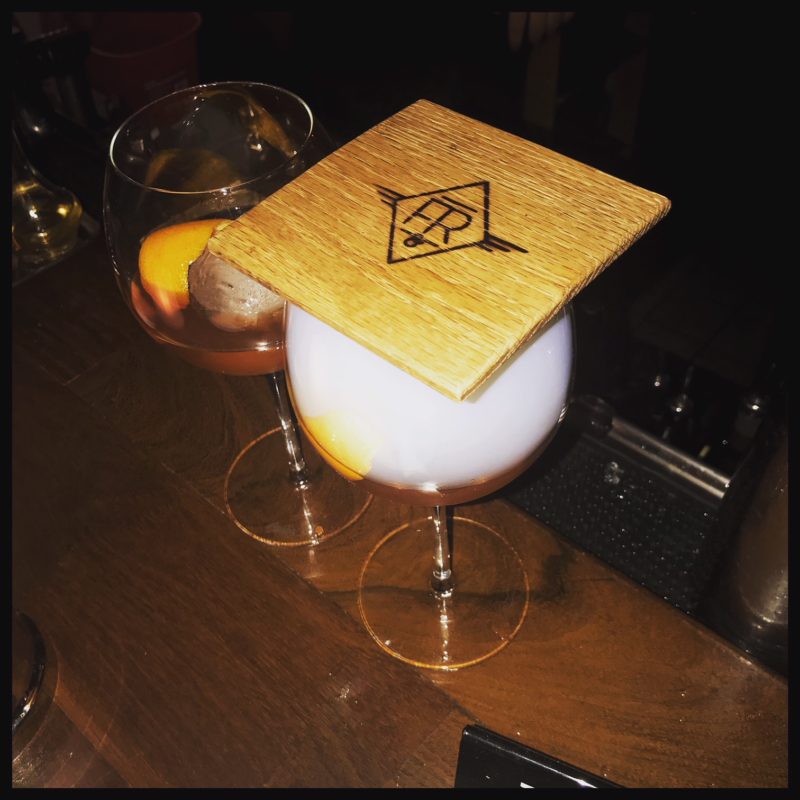 B: Favorite dram that you’ve had.
B: Favorite dram that you’ve had.
Tommy: Depends on the mood and on the season. In the summer time, I like things that are a little bit lighter, a little bit softer, and in the winter time I will go with a heavily peated one, heavily sherried once. If I am in Kentucky, I just think wow, I just love bourbon and rye. I love it so much, I do not know if I can drink Single Malts again. And then I go to Scotland, I do not think I can even drink Bourbon again. For myself as an example, my business would not work if people were extremely brand loyal. It works because of that element of promiscuity. I want them to come in and explore, and see something on the menu that they haven’t seen before, and be like oh I want to try that.
G: Two part questions. NYC has the most stringent regulations as opposed to some other states in the US. 1) How do you continue to thrive in NYC with these limitations 2) Do you see regulations changing if all of the bars and venues in NYC came together and demanded changes to be able to compete with venues around the US?
Tommy: It would be very short sighted to think that a big whisky collection is going to make your business a success. That is not the case here. What people like about us is that it’s an experience. We’re not charging you cover, we have a very beautiful space, and the knowledge based hospitality market, all of these elements aid in that experience. Because if it’s just the Whisky, I think we would fall flat. It’s never focused on getting more whisky, in our weekly meetings we’re focused on if we’re losing customers, and we’re losing traction, because we’re always looking to perfect the details about our venues.
The second answer regarding the regulations in the city, to my knowledge it has changed. I’ve had a conversation with my liquor attorney about 3 months ago, and he read me verbatim, something from the law. I do not have it with me, but I will paraphrase it. You can purchase liquor from a third party seller and resell it at your venue, provided it clearly marked on the label that this bottle has been purchased from a third party vendor. You also need to have a receipt on hand, in case the liquor authority should come in.
For me this was very exciting, the first thing I did was go out and purchase some really old bottles from auction of an old 1945 four roses and some really great stuff, because we did not know you can do that legally.
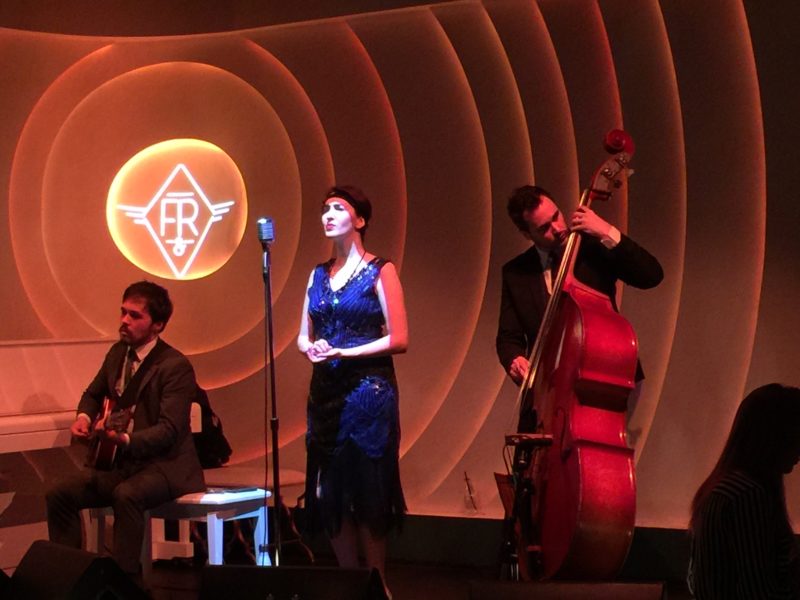 G: Have you had people that come in and order the 1945 Four Roses as well as some other old rare dusties?
G: Have you had people that come in and order the 1945 Four Roses as well as some other old rare dusties?
Tommy: All the time. I could show you tabs that people spent. To me a person who loves whisky, I am baffled. We just get people that come in and they will spend a tremendous amount on spirits. Again, it’s been a big learning curve but we have very very expensive whisky on the shelf in both locations. In the beginning it was a risk but I was prepared, in my mind I didn’t know if anyone was going to be able to sell this, at the margins that we want to maintain, but worst case scenario it looks really good on the back bar, establishes ourselves as a high end place. Worst case scenario I’ll keep it for myself and by the time we run our course it will be worth more. There is not a bottle that hasn’t been cracked.
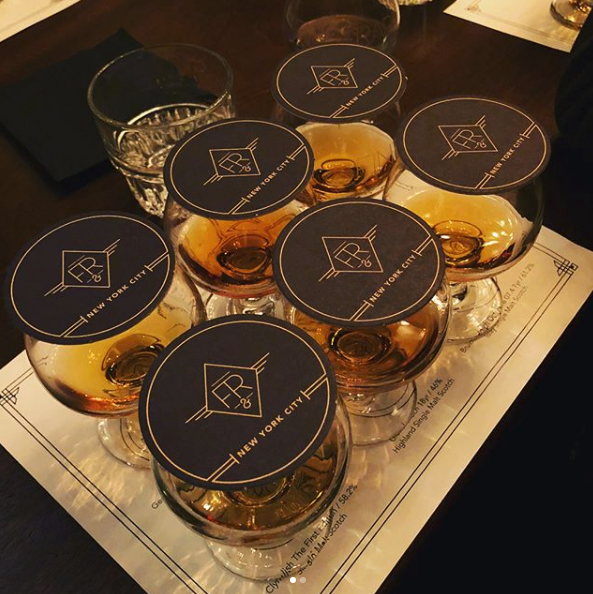 B: You talk about how you travel to expand your knowledge on whisky. How do you keep current with it?
B: You talk about how you travel to expand your knowledge on whisky. How do you keep current with it?
Tommy: I continually travel. I think it becomes easier the more you are in the culture and in this industry. Once you become known as being someone in the industry people kind of seek you out. This makes my job a lot easier. I am not as much on the pulse. I don’t have to actively seek the knowledge. People will come to me and that’s always helpful, because they would know that I would have an interest in purchasing it.
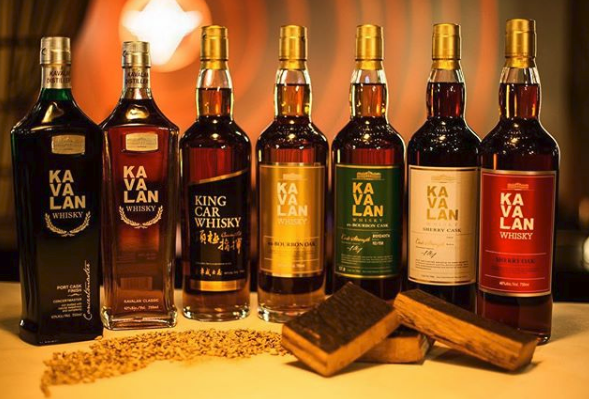 G: Taking Scotland and Bourbon aside, let’s talk about the International whisky market.
G: Taking Scotland and Bourbon aside, let’s talk about the International whisky market.
Tommy: I love bringing in anything from other countries. If someone’s bringing it in, I usually just scoop it up. I just love to have that diversity. We have an international section. Some are obviously more popular like Kavalan,or Indian Whisky with Paul John. I love bringing spirits from the other countries, it’s quite exciting. As someone who is a whisky nerd, I love that first most; I cannot wait to try it. There are some great things out there. And a big part of our business too is Corporate and Private Tastings. We do 2-3 every week here.
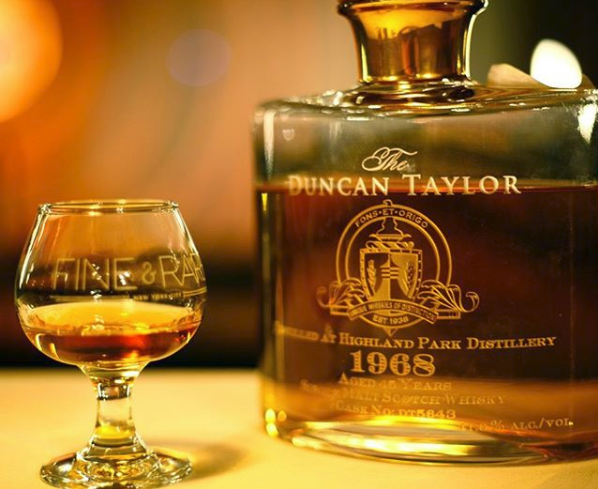 B: Most people would say whisky is experiencing a boom, it’s getting very popular. On social media the users are almost split into two. Some people are going along with it and are happy that whisky is enjoying this popularity and some people who have been purchasing whisky for a long time are kind of upset. I used to be able to get this for this price, I was able to get this easily and now I have to wait on the list. What would you say to the customers who are still hanging onto the past?
B: Most people would say whisky is experiencing a boom, it’s getting very popular. On social media the users are almost split into two. Some people are going along with it and are happy that whisky is enjoying this popularity and some people who have been purchasing whisky for a long time are kind of upset. I used to be able to get this for this price, I was able to get this easily and now I have to wait on the list. What would you say to the customers who are still hanging onto the past?
Tommy: I do not think you ever will. I think this is also the same people who in High School were like oh man AirWalks sold out, they went main stream. Well look at them, they want to make money now. It is what it is. It’s just the way our country is, were capitalists and its supply and demand. Sure I agree sometimes it’s really excessive, and I am in that same category, 100%, but I try not to let it get to me, and I think about the bigger picture. It’s an interesting time. There are a lot of people jumping in the game and the positive side is we’re getting some really unique and rare things.
B: Tell us about the Flatiron Whisky School.
Tommy: We do the whisky school here, whisky education and tequila education. We also do it at the Flatiron Room. We do them in a few different components.
- Regular classes that we sell tickets to. Customers can purchase the ticket online. They can buy a single ticket where they can come alone, or they can come with a group of friends. You come in, we give you a cocktail and a Charcuterie board and we talk shop, we talk whisky, we go through 6 different drams. It’s not something you’re going to build your career on, it’s more of an informative light, fun and engaging experience, where we want you to walk away with some cool tips that you can tell your friends at parties, maybe a couple of elevator pitches of certain brands.
- We do that one, but more than that, we have a lot of clients that use us as a dinner and a whisky tasting, or a designated whisky tasting for their clients. That is a bigger industry for us. Most of the clients will come back multiple times over the years. I think part of it, is customers and people are looking for more of an engaging experience.
G: How are you building the variety of spirits for Fine and Rare, such as Tequila, Rum or Mezcal?
Tommy: People generally have a mood they are in. Sometimes even myself I am in the mood to drink Mezcal. I just got back from Armagnac not too long ago; I’ve been on a big armagnac kick. When you first come in, we will help you identify what category you want to try and then from that category we can expand. But for the most part we are not influencing them in any one area. We laid the ground work by bringing a healthy amount in each category. We’re still a very new company so I am closely monitoring things just to see where people are purchasing. And based on those purchasing habits I’ll either expand in that category or not. Looking on sales now, we do a lot of wine, a lot of cocktails and a lot of whisky.
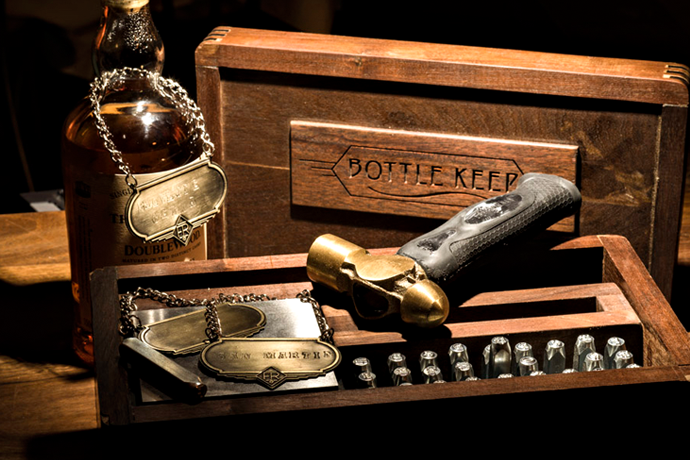 B: Tell us a little more about the bottle keep service, it sounds very interesting.
B: Tell us a little more about the bottle keep service, it sounds very interesting.
Tommy: It’s another one of those things that I just wasn’t sure about. Before I lived in New York, I lived in Hawaii, and I was really into surfing, and a lot of my surfing friends were Japanese. And I was much younger at that time, and we would go back to Japan with them quite a few times, and there’s a district in Japan called Roppongi, and Roppongi is the kind of a nightlife district that you go to when you’re in your early 20’s. I would go there with these guys and they had these bottles that were stored there. I just thought it was cool that when they went there they had bottles stored for them. Coming into the Flatiron room I had a creative background and I am always thinking of ways we could differentiate ourselves, from other people and I thought it would be pretty cool for a place for people to purchase bottles. I wasn’t sure this was going to work at first, and I knew I allocated a hell of a lot of spaces for these bottles that weren’t selling, and over the course of 1.5 years we started seeing them being filled. And now it’s completely full and I can see it worked out really well.
At Fine and Rare it’s a little bit different. We wanted to improve on everything that we did at the Flatiron Room. We know that the bottle keep worked. We sold over 3,000 bottles since we’ve been in business over there. What can we do different here. And we wanted to have different tiers. So we still sell individual bottles. But now we also sell lockers. Here we have 24 lockers. Each locker holds up to 12 bottles. You can opt for an individual bottle of you can buy an entire locker. If you buy an entire locker you have to purchase 6 bottles up front and you have to buy another 4 over the course of the year, and those were gobbled up right away. On top of the Tag that goes around the bottle, we have a plaque that has your name or the company name.
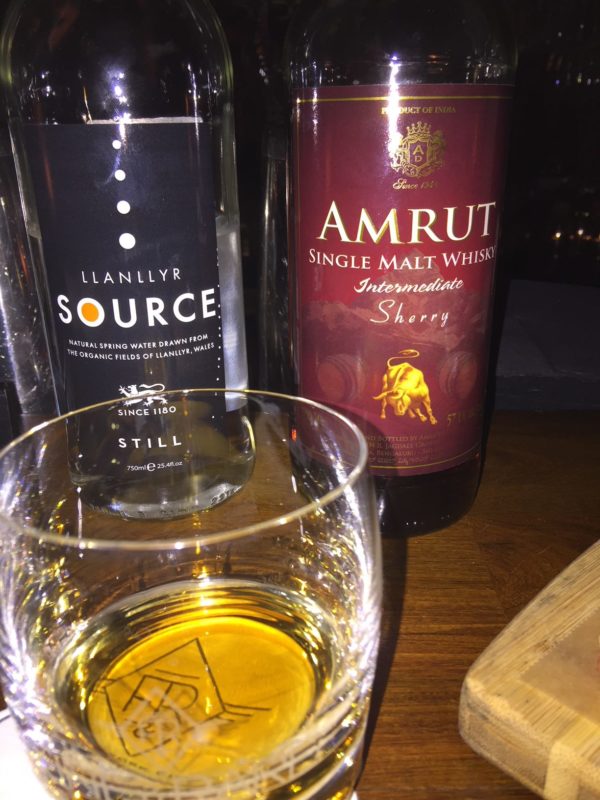 G&B: We wanted to thank Tommy Tardie personally for sitting down with us and doing such an extensive and quite interesting interview. Both Flatiron Room and Fine and Rare are distinguished in their own merits and warrant you to visit one if not both locations. The type of experience that they both offer is quite astounding. At the end of the interview, Tommy offered both Billy and I a drink on the house. We asked the Bartender what you would recommend for a couple of gents who love sherry bombs and want something eccentric. Two minutes later we were presented with an Indian Whisky Amrut Sherry Cask Finish.
G&B: We wanted to thank Tommy Tardie personally for sitting down with us and doing such an extensive and quite interesting interview. Both Flatiron Room and Fine and Rare are distinguished in their own merits and warrant you to visit one if not both locations. The type of experience that they both offer is quite astounding. At the end of the interview, Tommy offered both Billy and I a drink on the house. We asked the Bartender what you would recommend for a couple of gents who love sherry bombs and want something eccentric. Two minutes later we were presented with an Indian Whisky Amrut Sherry Cask Finish.





